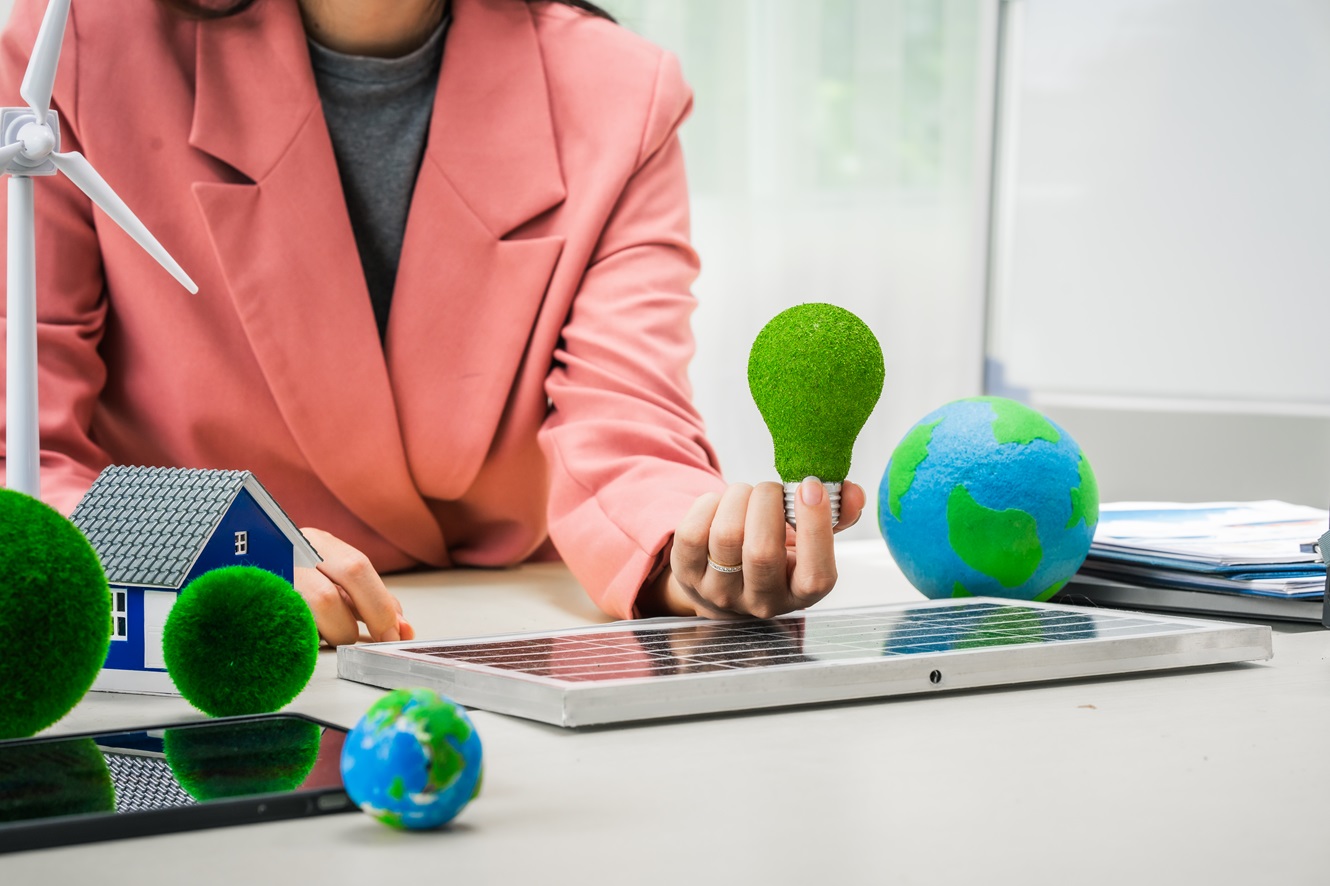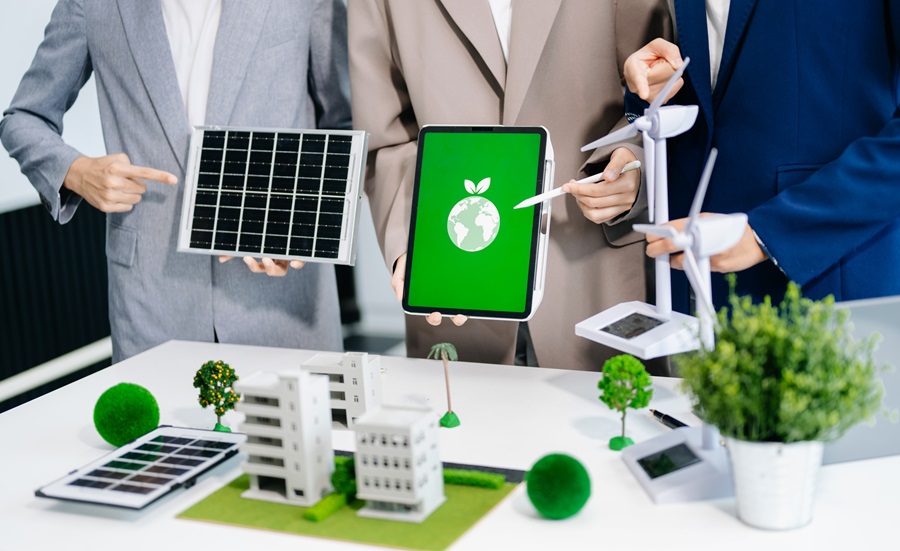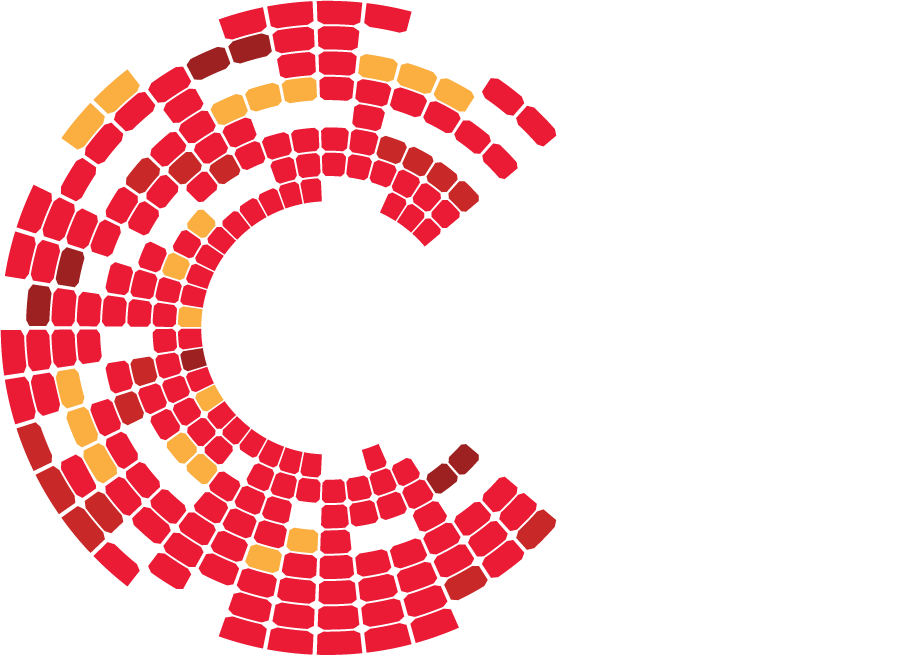Rapid advancements come with significant risks. As we forge ahead in our quest for progress, the toll on our planet becomes increasingly evident. The unchecked consumption of natural resources, rampant pollution, and escalating waste threaten the delicate balance of our ecosystems. Yet, in the face of these challenges, a revolutionary force is rising: green technology.
Green technology isn't just about saving trees — it's also about embracing innovation that dances with the rhythms of the Earth, offering us a chance to sip from the cup of progress without draining it dry. Read on to know how we can build a future where progress and environmental care go hand in hand.
What is Green Technology?
Green technology, also known as sustainable technology, encompasses a broad spectrum of innovations and practices designed to mitigate the environmental impact of human activities. It focuses on reducing carbon footprints, conserving natural resources, and promoting the use of renewable energy sources such as solar, wind, and geothermal power.
By prioritizing eco-friendly solutions and circular economy principles, green technology aims to create a harmonious balance between economic growth and environmental preservation, ensuring a healthier planet for future generations.
Brief History of the Green Tech Concept
The concept of green technology has evolved significantly over the past few decades. Its roots can be traced back to the 1960s and 1970s, when the environmental movement gained momentum, spurred by publications like Rachel Carson's "Silent Spring" and events such as the first Earth Day in 1970. This period saw the establishment of foundational environmental regulations and agencies, including the US Environmental Protection Agency (EPA).
The 1980s and 1990s witnessed advancements in renewable energy technologies, particularly solar and wind power, driven by both environmental concerns and the oil crises. The early 21st century has seen a significant acceleration in green technology innovation, spurred by international agreements like the Kyoto Protocol and the Paris Agreement, as well as growing public and corporate commitment to sustainability. Today, green technology is a vital part of global efforts to combat climate change and promote sustainable development.
Examples of Green Technology
Here are some notable examples of green technology:
1. Solar Power: Photovoltaic panels and solar thermal systems convert sunlight into electricity and heat, providing a renewable energy source.
2. Wind Energy: Wind turbines harness wind power to generate electricity, offering a clean alternative to fossil fuels.
3. Electric Vehicles (EVs): EVs reduce reliance on gasoline and diesel, lowering greenhouse gas emissions and pollution.
4. Energy-Efficient Appliances: Devices such as LED lighting, energy-efficient refrigerators, and smart thermostats consume less energy, reducing household and commercial energy use.
5. Green Building Materials: Sustainable construction materials minimize environmental impact. These include bamboo, recycled steel, and low-VOC (volatile organic compounds) paints.
6. Wastewater Treatment: Advanced filtration and bioreactor systems treat wastewater, reducing pollutants and conserving water resources.
7. Smart Grids: Intelligent energy distribution systems optimize electricity use, integrating renewable energy sources and enhancing grid reliability.
8. Sustainable Agriculture: Techniques like precision farming, vertical farming, and organic agriculture reduce resource use and environmental impact.
9. Recycling Technologies: Innovations in recycling processes for plastics, metals, and electronic waste help reduce landfill use and resource extraction.
10. Carbon Capture and Storage (CCS): Technologies that capture carbon dioxide emissions from industrial sources and store them underground to mitigate climate change.

Benefits of Green Technology
Green technology offers a comprehensive approach to achieving sustainable development. Here are some key benefits:
Environmental Benefits
- Reduction in Pollution: Green technology minimizes air, water, and soil pollution. Renewable energy sources like wind, solar, and hydropower generate energy without emitting pollutants.
- Conservation of Resources: Sustainable practices help conserve natural resources, ensuring their availability for future generations. This includes efficient water use, sustainable forestry, and reduced reliance on fossil fuels.
- Biodiversity Protection: By reducing habitat destruction and pollution, green technology supports biodiversity. Sustainable farming and responsible land use help protect ecosystems and wildlife.
- Mitigation of Climate Change: Renewable energy and energy-efficient technologies reduce greenhouse gas emissions, which are major contributors to climate change. This helps in stabilizing global temperatures and weather patterns.
Economic Benefits
- Cost Savings: Although the initial investment in green technology can be high, it often leads to long-term savings. Renewable energy reduces electricity bills, and energy-efficient appliances lower household and business operating costs.
- Job Creation: The green technology sector creates jobs in areas like renewable energy installation, maintenance, energy efficiency retrofitting, and green manufacturing. These jobs can stimulate local economies.
Social Benefits
- Improved Public Health: By reducing pollution and exposure to harmful chemicals, green technology can lead to better health outcomes. Cleaner air and water reduce respiratory and waterborne diseases.
- Energy Security: Renewable energy sources can reduce dependence on imported fuels, enhancing national security and energy independence. Localized energy production also makes communities more resilient to disruptions.
Technological and Innovative Benefits
- Advancement in Technology: Investment in green technology drives innovation, leading to the development of new technologies and improvement of existing ones. This can result in more efficient and effective solutions to environmental challenges.
- Sustainable Infrastructure: Green buildings and sustainable urban planning lead to infrastructure that supports long-term environmental health and human well-being. This includes energy-efficient buildings, sustainable transport systems, and smart grids.

Challenges to the Green Tech Concept
Despite its numerous benefits, both the adoption and implementation of green technology face several challenges. Here are four key challenges:
1. High Initial Costs
The initial investment required for green technology can be significantly higher compared to conventional technologies. This includes the costs of research and development, production, and installation. For instance, installing solar panels or setting up wind farms requires substantial capital expenditure. Although these technologies often lead to cost savings over time, the upfront financial burden can be a major barrier for individuals, businesses, and governments.
2. Technological Barriers
Green technology often involves complex and emerging technologies that may not yet be fully developed or widely available. Issues such as energy storage for renewable energy sources, efficiency improvements, and integration with existing infrastructure can pose significant technical challenges. Additionally, ongoing innovation and refinement are needed to enhance the performance and reduce the costs of these technologies.
3. Regulatory and Policy Challenges
The regulatory environment can either support or hinder the adoption of green technology. Inconsistent or insufficient policies, lack of incentives, and bureaucratic hurdles can slow down the deployment of sustainable solutions. Effective implementation of green technology requires supportive government policies, subsidies, and incentives to encourage investment and adoption. However, political and economic interests often influence the pace and direction of policy-making, leading to delays and uncertainty.
4. Public Awareness and Acceptance
Public awareness and acceptance of green technology are crucial for its widespread adoption. However, there can be resistance due to a lack of understanding, misinformation, or perceived inconvenience. For example, people may be hesitant to adopt electric vehicles due to concerns about range, charging infrastructure, and performance. Additionally, cultural attitudes and habits related to energy consumption and environmental responsibility can affect the willingness to embrace green technologies. Promoting education and awareness is essential to overcome these barriers and encourage more sustainable practices.
Green Technology Trends to Watch Out For
Green technology is rapidly evolving, with innovations and trends that promise to further reduce environmental impact and enhance sustainability. Here are some green technology trends to watch out for:
- Next-Generation Solar Cells: Perovskite solar cells are expected to become more commercially viable, offering higher efficiency and lower production costs. Additionally, solar panels integrated into building materials (building-integrated photovoltaics or BIPV) will become more common.
- Green Hydrogen: Production and utilization of green hydrogen, generated through electrolysis powered by renewable energy, will gain momentum as a clean energy carrier for sectors that are hard to electrify, like heavy industry and aviation.
- Advanced Recycling Techniques: Chemical recycling technologies will become more prevalent, enabling the breakdown of plastics into their molecular components for reuse in new products. Enhanced recycling systems for electronic waste (e-waste) will also develop.
- Expanded EV Models and Accessibility: The variety and affordability of electric vehicles will increase, with significant strides in battery technology extending the driving range and reducing costs. Automakers will launch more models across different segments, including trucks and SUVs.

Embrace the Future of Green Technology with CREIT
The world is rapidly shifting toward sustainable energy solutions, and now is the perfect time to be part of this transformative movement. At Citicore Energy REIT Corporation (CREIT), we are at the forefront of renewable energy innovation, offering you a unique opportunity to invest in a cleaner, greener future.
Investing in CREIT is more than a financial decision; it's also a pledge to support the global transition to renewable energy. By choosing to invest with us, you are championing innovation in green technology and making a tangible difference in the fight against climate change. Contact us now to learn more about our projects and how you can invest in a cleaner, greener tomorrow.


